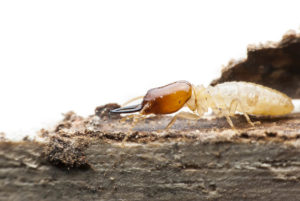The Louisiana Flood of 2016 is finally over and the flood waters are starting to retreat. People are returning home to access the damage and formulate plans to move forward. Streets, parking lots, houses and backyards that were recently under water are now drying out after the historic event that damaged at least 40,000 homes across the southern part of our state.
But, there are may be other problems that people are not aware of…
According to Frank Welch, the Louisiana Department of of Health’s director of community preparedness, we may experience an influx of West Nile in our area.
“The severe flooding in the middle part of the state is going to increase our risk for West Nile” he stated earlier this week.
Over the next month, the large amounts of standing water that remain in the flooded areas will provide an excellent breeding ground for new mosquitoes, and could result in an increased health risk for mosquito-related viruses starting three or four weeks after the flood recedes, Welch said.
A Tulane University study published in 2007 found that people were twice as likely to contract a more severe form of West Nile virus in parts of Louisiana and Mississippi that were most affected by Hurricane Katrina. It’s possible a similar spike could happen in the flood affected areas.
But the increase in West Nile wasn’t necessarily because there were more mosquitoes following Hurricane Katrina, but mostly because people in the areas hit by the storm tended to be outside more during mosquito season, working near standing water.
As people cleaned up and repaired homes after Katrina, they were outside longer and during the time of day when mosquitoes are most active, said Dawn Wesson, a professor at Tulane University’s School of Public Health and Tropical Medicine. The same scenario could occur for after this recently flooding.
What can you do to protect against West Nile?
There are steps you can take to minimize the risk of your exposure to the West Nile virus and to protect yourself and your loved ones.
First, it’s important to identify areas in your yard or flooded home where mosquitoes breed including wet spots, damp areas and standing water. Empty out these areas. Be sure to wear insect repellent when working outside or inside your flooded home or property.
Second, we recommend creating a mosquito barrier around your home with our mosquito control service. While Louisiana parishes and cities spray roads and ditches, it’s best for each homeowner to treat their own property especially within the nearest 10 feet of the home.
Contact us today to learn more about the mosquito services that we offer!

 Summer brings warm weather and fun outdoor activities for you and your whole family. Unfortunately, it also brings with it pesky mosquitoes. Whether you are biking, swimming, or just sitting around a campfire, chances are you are going to be bitten at least once. In order to cut down on the potential risks that come along with mosquitoes, discover some effective ways to prevent them from taking over your backyard.
Summer brings warm weather and fun outdoor activities for you and your whole family. Unfortunately, it also brings with it pesky mosquitoes. Whether you are biking, swimming, or just sitting around a campfire, chances are you are going to be bitten at least once. In order to cut down on the potential risks that come along with mosquitoes, discover some effective ways to prevent them from taking over your backyard. You may have already heard that bioremedial foam treatments are a type of pest control which are gaining popularity with many types of businesses and that this type of treatment is particularly helpful for restaurants. If you are not sure what a bioremedial foam treatment is, it is the use of a foam that contains beneficial microbes which help to destroy the harmful microbes that are present in the area being treated.
You may have already heard that bioremedial foam treatments are a type of pest control which are gaining popularity with many types of businesses and that this type of treatment is particularly helpful for restaurants. If you are not sure what a bioremedial foam treatment is, it is the use of a foam that contains beneficial microbes which help to destroy the harmful microbes that are present in the area being treated. “Don’t let the bedbugs bite.” How many of us have heard this line before? Imagine yourself ready to drop out from sheer exhaustion and looking towards some much-needed shut-eye, only to find yourself hopping out of bed because of insects crawling all over it. Bedbugs are becoming an urban nuisance, and they can ruin your sleep and make you cranky the morning after. In recent years, bedbugs are enjoying a resurgence, as they have invaded a lot of urban areas, most especially homes and hotels.
“Don’t let the bedbugs bite.” How many of us have heard this line before? Imagine yourself ready to drop out from sheer exhaustion and looking towards some much-needed shut-eye, only to find yourself hopping out of bed because of insects crawling all over it. Bedbugs are becoming an urban nuisance, and they can ruin your sleep and make you cranky the morning after. In recent years, bedbugs are enjoying a resurgence, as they have invaded a lot of urban areas, most especially homes and hotels. If cells are the building blocks of life, then consider cellulose as the building block of wood.
If cells are the building blocks of life, then consider cellulose as the building block of wood.